Basques in the Americas 1792-1893
Basque frontier soldiers were stationed at or lived near the Mission at Tumacácori, Arizona. Photo: Steve Bass.
February 10, 2020
This is one in a series of chronologies on historic contributions of Basques posted in Euskal Kazeta.
RELATED CHRONOLOGIES:
Basques in the Americas 1492-1592
Basques in the Americas 1592-1692
Basques in the Americas 1692-1792
Juan Francisco de Bodega y Quadra
1792– British negotiator George Vancouver and Spanish negotiator Juan Francisco de Bodega y Quadra begin talks regarding the west coast of North America, its boundaries and accessibility by each country.
1794– Among the Basques stationed at the Tucson Presidio are officers Mariano Urrea, Juan Felipe Beldarrain, José María Sosa, Francisco Usarraga and cadets José Romero de Urrea and Bernardo de Urrea.
1795-1781– In Valladolid, Michoacán, led by Juan Basagoiti, more than 200 Basques are involved in government, commerce, ranching, mining and sugar production. In Morelos and Cuernavaca, Basques own all the sugar factories.
1795– Manuel de Echeagaray is promoted to military commandant of Sonora.
Bill Douglass’ “Amerikanuak” is the most comprehensive book written about Basque exploration of the New World. To buy Amerikanuak, click here.
1796– Lieutenant Mariano Urrea marries Gertrudis Elías González in Arizpe. Both are from pioneering Sonoran military families. In 1797, Basque padre Pedro Arriquibar baptizes their first son.
1796– The first governor of Tennessee, John Sevier, is Basque. He was born in Rockingham County, Virginia, to a French Huguenot family who originally spelled their name “Xavier.”
1797– President of the Pimería Alta missions is Fray Francisco Yturralde, missionary at Tubutama.
1797– Juan Bautista Elguézabal is appointed interim governor of Texas. He is acting governor when Louisiana is sold to the United States and must handle hundreds of petitions of immigrants from Louisiana requesting to relocate in Texas. When José Irigoyen is appointed the next governor, Irigoyen never comes to Texas. Elguézabal then retains the office until he dies in 1805 in San Antonio.
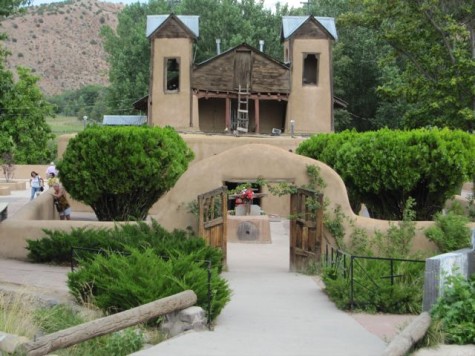
1797– Fray Lasuén founds Missions San José, San Juan Bautista, San Miguel de Arcángel and San Fernando Rey de España in Alta California.
1797– José de Urrea is born at the presidio of Tucson. He is the great-grandson of Bernado de Urrea, who was a key figure in the naming of Arizona and Juan Bautista de Anza’s deputy justicia mayor.
1798– Fray Lasuén founds Mission San Luis Rey de Francia in Alta California.
1800– Before the Louisiana Purchase, the last Spanish Governor of Louisiana is Juan Manuel de Salcedo. He was born in Bilbao, Bizkaia.
1800– José Retegui comes to Mexico to work in the Fresnillo silver mines. He becomes one of the wealthiest men in the region.
1803– Army surgeon Dr. Cristóbal María Larrañaga, assigned to Santa Fe, introduces smallpox vaccine to New Mexico as a part of the Spanish government’s Royal Expedition to take vaccinations to all the colonies.
1803– The last governor of Louisiana while under French rule is Pierre Clement, Baron de Laussat, born in Pau, Nafarroa. The first historian of Louisiana is Charles De Gayarre.
During the last 30 years of Spanish rule in Alta California (present day California) three of the governors are native Basques. They are José Joaquin de Arrillaga, Diego de Borica Retegui and Pablo Vincente de Solá.
José Joaquin de Arrillaga
José Arrillaga, a professional soldier from Aya, Gipuzkoa, is governor of both Baja and Alta California from 1792 to1794 and from 1800 to 1804. He is governor of Alta California again from 1804 until 1814 when he dies at the mission of Soledad. He is called “Papa Arrillaga” because he is present at every baptism or wedding in California upper-class society.
Diego de Borica
Diego de Borica y Retegui, from Vitoria, Alaba, is in charge of the Presidios of Chihuahua before becoming governor of Alta California from 1794 to 1799. Borica is also a soldier and had served as a Lieutenant Colonel under previously mentioned General Jacobo de Ugarte y Loyola, fighting Apache tribes along the northern Mexican frontier in 1787. Borica is a wealthy man and is married to Basque, Maria Magdalena de Urquidi. She is a direct descendent of one of the founders of Durango, Mexico. Borica’s health forces him to retire in 1799. He dies in Durango in 1800.
Father Fermín Francisco de Lasuén
During the time Arrillaga and Borica are the Governors of Alta California, their close friend, Fermín Francisco de Lasuén, also from Vitoria, is President of the Alta California missions (1785 to1803.)
José Joaquín Vicente de Iturrigaray y Aróstegu
1803– Iturrigaray y Aróstegui is made Viceroy of New Spain. He is married to María Inés de Jáuregui y Arístegui and rules until 1808 when he is deposed by political activists and returned to Spain.
1804– Juan Alejo de Arizmendi is appointed first Bishop of Puerto Rico. Arizmendi is born in Puerto Rico in 1760 and dies there in 1814. He is a liberal patriot and becomes a national symbol of Puerto Rico.
1804– Under the directions of governor José Arrillaga, Gabriel Moraga becomes the first European to explore the central valley of California. He is the son of José Joaquín Moraga, the founder of San José.
The younger Moraga is among the best traveled and most geographically knowledgeable of all the early Californios. He leads more than 40 expeditions into the Central Valley from 1804 to 1817. He discovers and names most of the rivers and landmarks in the valley including the valley itself, as well as Pacheco Pass and the Merced, San Joaquín, Tuolumne, Stanislaus, Calaveras, Kings and Mokelumne Rivers. He also names the areas later to become Sacramento and Modesto.
According to some historians, Moraga names the San Joaquín River and the San Joaquín Valley after his father. During these explorations, historian Charles Edward Chapman suggests Moraga may have also been the discoverer of Nevada.
1805– Mariano Urrea, grandson of Bernardo Urrea, is commander of Altar presidio. He holds the position until 1811. Mariano is the father of José Urrea who will become an important part of Mexico’s history beginning in the 1830s.
1806– Governor Arrillaga also orders José Joaquín Maitorena to explore the interior of California.
Jesuit Order founders St. Ignatius from Loyola, Gipuzkoa, and St. Francis from Javier, Nafarroa, are both Basques.
1806-The governor of Baja California is Felipe Antonio de Goycoechea, former Comandante of Santa Bárbara.
1808– Pedro de Garibay replaces Iturrigaray y Aróstegui as Viceroy of Mexico. He is a handpicked puppet of the political activists who have taken over the government and is a senile octogenarian and an ineffective leader.
1809– Fathers Santiago Usuastegui and Saturnino Arizeta complete mission La Purísma Concepción de Caborca in the northern Sonoran Desert.
1809– Friar Míguel Zugastegui, who is part of the Independence movement in Mexico, dies in prison after his capture by the Spanish. He is considered a martyr of Mexican independence.
1810– Miguel Ramos Arizpe is Coahuila’s delegate to the audiencia of Guadalajara.
1811– Rancher and retired Lieutenant Colonel Ignacio Elizondo helps quell an early attempt to overthrow Spanish control of Texas called the Hidalgo Revolt.
1811– Don José Agustíne Yndajauregui is the teacher at Parral.
1813– On August 18, near the Medina River in Texas, a military action involving two Spanish armies numbering 1,600 troops is led by Joaquín Arredondo and Ignacio Elizondo against an army of 3,200 men, mostly Americans, rebelling against Spain. This rebel army is known as the Republican Army of the North. The Spanish armies crush the rebels in four hours, killing 1,300 men and executing wounded prisoners. The 1,300 rebels killed are more than the total number of Texans who will die during the entire Texas Revolution 23 years later in 1836.
Among the other Basque officers in the two Spanish armies that day are: Commander of the infantry, Antonio Elosua; captain Vincente Arreola, Captain Antonio Zárate, second lieutenant José Ybarra, commander Francisco Arizmendi; and cavalry officers Manuel Zozaya, Miguel Serrano, Domingo Ugartechea and future interim governor of Texas, Juan José Elguezabal.
1813– Don Bernardo Abeyta, a wealthy and influential New Mexican landowner and trader, builds the chapel of El Santuario de las Esquipulas in Chimayo, New Mexico. It is one of the most sacred pilgrimage sites in the North American Southwest and is still known locally as the “Lourdes of America.”
1814– José Antonio de Errázuriz y Madariaga is president of the Chilean Senate.
1816– Juan José Ruiz de Apodaca y Eliza, from Araba, is Viceroy of Mexico.
1817– Gregorio Egurrola is recognized for his lengthy military service at the Royal Presidio of San Agustín del Tucson in what is now Arizona.
<p Pablo Vincente de Solá
1815 to 1822– Pablo Vincente de Solá, born in Mondragon, Gipuzkoa, is the last Spanish governor of Alta California. He, like governor Borica, is also a Lieutenant Colonel and is appointed governor after José Arrillaga dies. Solá founds the first primary schools in California. He has a brother, Faustino, who serves as a Franciscan missionary in Alta California from 1786 to 1790.
Vincente Francisco de Sarria
During Solá’s term, the President of the missions in Alta California is fellow Basque Vincente Sarria.
1817– Sarria founds mission San Rafael Arcángel 20 miles north of San Francisco. He is also credited with the “first original contribution ever offered by a resident of California in the field of medicine,” an 1830 paper on caesarean section.
1818– Basques in the service of Spain at the Tucson presidio include: Frey Pedro Arriquibar, chaplain, and soldiers Francisco Usárraga, Francisco Amaya, Francisco Villaescusa, Ignacio Urias, Vincente Sosa, José Carrisosa, Nepomuceno Duarte, Valentine Usárraga, Ignacio Moraga and Juan Noriega. This accounted for 10% of the posted personnel.
1821-Agustín de Itúrbide proclaims Mexico’s independent from Spain and names himself as Emperor of Mexico. He is born Agustín Cosme Damian de Itúrbide y Aramburu of Basque parents in Valladolid, (now Morelia, Michoacán) Mexico in 1783. (His wife is Doña Maria Josepha de Arregui y de Gastelu.) Upon becoming “Emperor,” he draws up a constitution known as the Plan de Iguala and enters Mexico City in September 1821. He assumes the title of Agustin I on May 19, 1822.
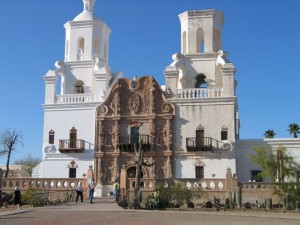
1821– Nicaragua and four other Central American countries receive their independence from Spain due mainly to the efforts of Miguel Jerónimo Larreynaga. He was born in Leon, Nicaragua, on September 29, 1772 and is a statesman, philosopher, humanist, lawyer and poet. Larreynaga dies on April 28, 1847. His likeness is pictured on the $10 Corona in Nicaragua.
1822– In October, Itúrbide names Antonio López de Santa Anna as brigadier general and Commander of the Province of Veracruz. In November, Itúrbide becomes suspicious of Santa Anna and removes him from command. In December, Santa Anna proclaims “la Republica” and declares Itúrbide’s reign invalid.
1823– On January 4, Itúrbide signs the first permit for the settlement of Anglo-Americans in Texas for Stephen F. Austin’s colony. In March Itúrbide abdicates and leaves Mexico and goes to Europe. Not knowing there is a death warrant facing him if he returns to Mexico, he lands at Sota la Marina on July 15, 1824 in a vain attempt to regain his throne. He is recognized, captured and executed at Padilla, Tamaulipas, on July 19. In 1838 his remains are moved to Mexico City and enshrined in the National Cathedral.
1824– Juan Martín de Veramendi is the first alcalde of Béxar (San Antonio, Texas.) Born in Béxar on December 17, 1778 he becomes vice-governor of Coahuila and Texas in 1830 and governor in 1832. His administration is favorable to the Anglo-American colonists and, therefore, unpopular with many of the Mexican groups.
1824– Agustín Jerónimo de Iturbide y Huarte fights alongside of Simón Bolívar during the Columbian war of independence at the Battle of Auacucho. This battle secured the independence of Peru from Spain. Iturbide y Huarte is the son of Agustín de Iturbide (mentioned previously) and Ana María Josefa Ramona de Huarte y Muñiz. Iturbide y Huarte was Prince Imperial of Mexico while his father was the short-lived Emperor of Mexico.
During the Mexican-American War Iturbide y Huarte leads the Celaya Battalion during the Battle of Padierna on August 19-20 in 1847. He later is an attaché at the Mexican Legation in London. Iturbide y Huarte dies, unmarried, in New York City on November 11, 1866. He is buried in Philadelphia.
José María de Echeandía
1825 to1833– Mexican-born Basque José María de Echeandía is governor of Alta California. The capital of Alta California is moved to San Diego because of his preferences.
1826– American trapper Jedediah Strong Smith enters California through the Mojave Desert. José Echeandía, governor of Alta California, is fearful that Smith’s reports will open the area to the hated Americans. Echeandía orders Smith out of California via the same route through the desert. Smith defies Echeandía and, instead, turns north and enters the San Joaquin Valley, probably through Walker Pass. On February 5, 1827, Smith becomes the first American to visit the future site of Bakersfield, thanks in part to disobeying Echeandía’s orders. (Ironically, according to biographer Maurice Sullivan, Smith is of Scottish, English and French-Basque ancestry. Smith’s exploits are the subjects of numerous books.)
1829– Santiago Ulibarrí, a direct descendent of Juan, is Alcalde of the Spanish villages of Pecos and El Vado, New Mexico. More than 100 years before Santiago, Juan de Ulibarrí had been well accepted and respected by the Indians of the Pecos pueblo. As mentioned previously, Juan had also been Alcalde of the village of Pecos.
1829– Lorenzo de Zavala is granted a contract to colonize Texas.
1830– A “Board for the Development of the Californias” is formed. Of its 20 members, eight are Basque: Pablo Vincente de Solá, José Ignacio Ormaechea, Manuel Ibarra, Francisco Cortina, Francisco Fagoaga, Isidro Icaza, Juan Francisco Azcarate and Tomás Zuria.
1831– In San Antonio, Jim Bowie, legendary American frontiersman, marries Basque Ursula María de Veramendi. She is the daughter of the provincial governor of Texas, Don Juan Martín de Veramendi, mentioned previously. Bowie and his father-in-law, Veramendi, go into partnership establishing cotton gins in Saltillo, Coahuila. In September 1833, while Bowie is away on a business trip, a cholera epidemic kills Ursula, her father and the rest of the Veramendi family. Bowie dies at the Alamo on March 6, 1836.
1833– José Antonio Laureano de Zubiría y Escalante is Bishop of Durango.
1834– The Alta California Ranchos’ tallow and hide business depends on a shipping route between California and Callao, Peru. Of the 12 major shipping companies, four are Basque owned. They are: The Juan Francisco Izcue Company, the Aramburu Brothers, Urien and Company and Dalidou Larrabure and Company.
1834– Premier Cuban cigar brand “Por Larreñaga” is introduced by Ignacio Larreñaga making it the oldest continuously produced Havana brand still in existence.
1834– José de Urrea is made colonel in the Mexican army by Francisco Ellorriaga.
1834– Captain Juan José Elguézabal, veteran of the Medina River battle, is commandant of the Presidio del Río Grande in Coahuila. Like his father, Juan Bautista Elguézabal (mentioned earlier), he also is adjutant inspector of the presidios of Coahuila and Texas. On August 30 he is made interim governor of Texas.
1835– American colonists in Texas break away from Mexican rule and seize several towns and forts including the Alamo and the town of Goliad. Antonio López de Santa Anna heads for the Alamo and his subordinate José de Urrea, now a general, heads to Goliad.
Urrea leads his troops to several victories on his way to Goliad. Upon reaching the town, he forces a surrender of the Texas troops on March 19. Urrea takes over 400 prisoners and requests they be treated as prisoners of war. Santa Anna, his superior, insists they be executed. Urrea balks at this order, but he is again reminded by Santa Anna that he take no prisoners.
On March 27, 1835, more than 400 Texans are executed in a slaughter much greater than the one at the Alamo. (Urrea had left the area earlier on another action and did not take part in the killings. Santa Anna sent General José de la Portilla to see to the executions.) Urrea is never defeated in battle.
1835– After the battle of the Alamo, while looking at the battle site, Mexican army Captain Fernando Urizza states to Santa Anna that he is amazed at the General’s insensibility to the death around him. Santa Anna points to the charred corpses and makes a casual remark. “These are the chickens. Much blood has been shed, but the battle is over,” Santa Anna says. “It was but a small affair.”
1835– José Domingo de Ugartechea is Principal Military Commandant of Coahuila and Texas. Ugartechea considers the Texans to be disrespectful towards his government and its leaders. He writes in one letter: “Nothing is heard but God damn Santa Ana. God damn Urgartechea.”
1837– In Louisiana, Basque inventor Louis Jacques Mendé Daguerre introduces his invention of the Daguerre-type camera to America. It is the first practical process of photography.
1838– Felíx María Zuloaga, a military man and politician, fights the Apache and Comanche in Sonora. He also fights in the War of Texas Independence and, during the war with the U.S., he is mayor of Chihuahua. Later he is president of Mexico three times but is exiled to Cuba in 1865. Several years later he returns to Mexico as a successful tobacco merchant. Zuloaga dies in 1898 in Mexico City.
1839– In February, previously mentioned José Domingo de Ugartechea goes to Saltillo from his post in Monterrey to help defeat a federalist uprising. He is killed in the defense of the city on May 24, 1839.
Joaquín de Iturbide
1840– Joaquín de Iturbide is Minister of Justice in Mexico.
1841– Cesareo Lataillade, born in St. Jean de Luz, makes his first voyage to California. He settles in Santa Barbara and in 1845 marries María Antonia de la Guerra y Noriega, a daughter from one of California’s most prominent families.
In 1846, Lataillade is named vice-consul of Spain in Monterey and becomes French consul three years later. In 1848, when gold is first discovered in California, he forms a supply company to the miners of Placer County and becomes one of California’s wealthiest businessmen. Unfortunately, he dies accidentally shortly before 1850.
1842-1844– José de Urrea assumes executive power of Sonora.
1846– Urrea fights against the United States in the Mexican War. He dies in 1849.
Manuel Micheltorena
1842 to 1845– Manuel Micheltorena, a Mexican-born Basque, is Governor of Alta California.
1842– By this time, Basques have been in the Americas for more than 350 years.
1844– Julian Ursua opens the Plaza Hotel in San Juan Bautista, Alta California. It is probably the earliest Basque hotel in North America.
1847– Miguel María de Echegaray, General in the Mexican army, battles the invading Americans. He also fights against the French until 1865. He is one of the coup leaders who help depose president Zuloaga, mentioned previously, from his office.
1849 – The basic mining technology used in the California gold rush and the Comstock Lode in Nevada is imported from Mexico. Included in this technology is the arrastre. This is a device where a mule or burro pulls a heavy block of granite around and around in a circular trough, also made of granite blocks. Ore is placed in the trough and the stone block being dragged around a center post grinds the ore into finer pieces so the gold can be retrieved and processed.
Basque historians Donald Garate and Joxe Mallea-Olaetxe both believe that the term arrastre is derived from the Basque words arri, meaning “stone,” and auste, meaning “breaking or grinding action.” Arrastres may still be found in remote, abandoned mining areas throughout the west.
1850– Pedro Altube comes to California seeking gold. He raises cattle and sheep instead. (He is 6’8” tall and is called “Palo Alto” –tall pine– by his vaqueros. It is said Palo Alto, California, where he had a ranch, is named for him.) He makes enough money to buy a herd of cattle and trails them to Nevada. In 1873 he founds the huge Spanish Ranch with his brother Bernardo and starts bringing Basque friends and relatives to the U.S. to help with his growing enterprises. These people then spread to every western state. Altube is known as the “Father of Basques in the West.”
According to Mallea-Olaetxe, other important early Basque ranchers in California and Nevada are Jean Baptiste Garat, Jean Pierre Indart (Yndart) and John Arrambide. The YP brand (for Pete Yndart) is believed to be the third oldest brand in the U.S. It is the only brand registered in the U.S. Patent Office and has been in use since 1852.
1851– Queen Isabel II appoints Joaquín Marcos Satrustegui Bris Consul of Spain for San Francisco.
1851– Basques ranching in the Sentinella (Santa Nella) area of central California in the 1850’s include Perdro and Bernardo Altube, John Etcheverry (Juan Grande), John Indart (Juan Chico), and Joaquín Bolado.
1860– Pedro Albaitero from Almandoz, is a major bakery owner in Mexico City. In the mid-18th to the mid-20th centuries, bakeries in Mexico City are dominated by Nafarroan Basques, mostly from the Baztán Valley. By 1900 Albaitero develops the foundation for the modern bread industry in Mexico and the center for Basque immigrants into the community.
1860– Basque ranchers and butcher shop owners working in the gold rush area of California during the 1860’s include the Altube brothers, Juan Baptiste Arrambide, Bernardo Ohaco, John Indart, John Etcheverry, the Abadie brothers, Juan Miguel Aguirre, Miguel Goldarecena, Salvador Ihitzague, Juan Iribarre, Thomas Ithuralde, Jean Ochoa and Juan Oxaby.
1863– John Indart and Mary Erreca Indart open what may be the first Basque boardinghouse in the U.S. at Sentinella Ranch (Santa Enella) between Fresno and Stockton.
1866– Juan Miguel and Martina Aguirre open what is probably the first actual ostatu (an ostatu is a Basque hotel, boardinghouse, restaurant, meeting place, etc.) in the US on Powell Street in San Francisco. The name of the hotel is not documented and is simply called “Aguirre’s.”
1871– Dominique Amestoy founds Farmers & Merchants Bank in downtown Los Angeles.
1872– The last of the Basque names is added to the El Morro cliff inscriptions in New Mexico. It is written in English and reads:
SIMON HILGER
ANTONIO ABEYTIA
FREIGHTERS SANTA FE JULY 3 1872
1877– Braulio Iriarte Goyeneche from Elizondo arrives in Mexico City. By 1890 he owns some of the city’s major bakeries and, along with other investments, these businesses make him one of Mexico’s most important industrialists.
1878– Doroteo Arango is born near San Juan del Rio, Durango on June 5. He is the son of Agustín Arango and María Micaela Arambula. He becomes a bandit, a leading general in the Mexican Revolution and a provisional governor of the state of Chihuahua before he is assassinated in 1923. He is better known as Francisco “Pancho” Villa.
1880– Félix Berenguer de Marquina is Viceroy of Mexico.
1885– Escualdun Gazeta, a Basque weekly started by José Goytino, begins publication in Los Angeles.
1887– Pedro Albaitero, mentioned earlier, and José Arrache construct La Florida, a steam powered flourmill, which is the first flourmill in Mexico City. Before this time the mills were on the outskirts of the city to utilize waterpower from streams. By 1896 the two partners own at least 11 major bakeries in the city.
1892– By this time, Basques have been in the New World for more than 400 years.
1893– The first edition of the weekly California’ko Eskual Herria is published in Los Angeles by Martín Biscailuz.
1893– Faustino Mier Noriega and Fernando Etcheverry open the Iberia Hotel in Kern, now Bakersfield, California. (Faustino Mier is from Santander, Spain and comes to the U.S. to work for his uncle Vincente Noriega in Tulare, California and adopts his uncle’s surname as his own.)
Faustino changes the name of the Iberia to the Noriega Hotel in 1906. Today, according to Jeronima Echeverria, the Noriega Hotel is not only the oldest ostatu in the U.S. It is also the oldest in the world. It is the only establishment that still takes in Basque boarders and serves family-style meals at one seating.
An interesting note related to Basque exploration: Hiram Bingham, a historian and assistant professor of Latin American History at Yale University, is credited with “discovering” the lost Inca city of Machu Picchu in South America on his 1911 Peruvian expedition. However, Melchor Arteaga, a Peruvian-Basque innkeeper, leads him to the site. When they arrive at the ruins they find the words “1902 Agustin Lizarraga is the discoverer of Machu Picchu” scratched on a rock. Lizarraga is a local Peruvian-Basque farmer who had actually located the famous “lost” city nine years previous to Bingham and Arteaga.
Finally, Donald T. Garate states in his paper Basque Names, Nobility, and Ethnicity on the Spanish Frontier: “Aside from the hundreds of soldiers, sailors, government and church officials who were prominent in the exploration, conquest, and settlement of not only Nueva España, but also of South and Central America, there are thousands of Basques to be found in village, mission, and presidio records. For example, Basque names common in Culiacán in the seventeenth and eighteenth centuries are Abiles, Aguirre, Albestrain, Amesqueta, Barrera, Beltrán, Castaños, Echave, Echevarría, Egurrola, Escobar, Espinosa, Gaviria, Ibarra, Ibarrcoa, Iturrioz, Lizarraga, Liziaga, Mendazona, Mendoza, Ochoa, Sala, Oztia, Tapia, Urrea, Zabala, and Zazuta.
“In Arizpe, Sonora, in the eighteenth century one finds such names as Amentia, Barcena, Bustamante, Mendibel, Moraga, Ochoa, Salazar, Subiate, Velarde, Velasco, and Zubia. In the Altar Valley some of the prominent Basque names are Gastelu, Gortari, Mendoza, Murrieta, Ochoa, Urias, Urrea, and Unzarraga. Although one does not see many Basque names on the far reaches of the frontier at Guevavi and Tumacacori until after the building of the presidio at Tubac, Basques labeled as españoles or gente de razón suddenly were everywhere when the soldiers arrived.
“Acuña, Aguirre, Albizu, Algorri, Amesqueta, Amurrio, Arbulo, Arriola, Belderrain, Bezerra, Bustamante, Castillo, Durán, Gamarra, Hurtado, Iguera, Iguerza, Irigoyen, Iturbe, Lagarra, Larralde, Mendiola, Mendoza, Munguia, Ochoa, Orozco, Pamplona, Salazar, Sarobe, Serrano, Urzanea, and Zuñiga are a sampling.”
As Garate continues with his observations: “One cannot look at obvious Basque place names on the frontier and think that some Castilian named them. Everyone is familiar with Nueva Vizcaya and Durango, but consider Arizpe, Ures, Cananea, and Horcasitas, towns along the Sonora and San Miguel River drainages in Sonora. All, with the exception of Ures, have their counterparts in solares and villages in Viscaya. Ures, unless by some coincidence it has a meaning in the Pima or Opata language, refers to water in Basque, a rather obvious connection in a fertile river valley that is populated by hundreds of Basque descendants. Another intriguing name is the ancient royal mining town of Basochuca near Arizpe. Though it would appear to be an Indian name it means finches in Basque.
“Furthermore, Basque place names are certainly not unique to Sonora. Among examples elsewhere consider Jaso, Velarde, Chavarría, and Goycoechea in Chihuahua or the Sierra de Arratia between Culiacán and Durango. There are many other instances, but there is no need to belabor the point. Sailing to New Spain in large numbers, the Basques came early on and left a tremendous legacy in the places they settled.
“As one can tell, even though the Basques were a minority in the New World that certainly did not mean they were unimportant. Though large numbers of Basques came to Nueva España, it was a relatively small number compared to the other Spaniards and Europeans who also arrived. Those Basques who did come made gains far out of proportion to their population. Wherever they settled they had a habit of joining together to form a small but opportunistic minority. In the more than 500 years the Basques have been here, they have maintained and exploited their strong work ethnic, cultural and linguistic ties to successfully help explore, colonize and develop the Americas.
A note from the author
Hopefully, this overview has been enjoyable and interesting reading. It is doubtful that it will ever be finished, as it remains a work in progress. It is surprising how, when and where information turns up.
I would again like to express my appreciation to William A. Douglass and Jon Bilbao for their ground-breaking work; to Don Garate for his encouragement, help and generosity towards this work and me; to Joxe Mallea-Olaetxe for his interest, encouragement and help; to retired Bakersfield College instructor Sasha Honig for getting me started on this project more than 35 years ago, for her recent help, and for alerting me to the California Mission Studies Association, and to Professors John Ysursa and Steve Gamboa for their encouragement. Through their efforts and those of the other scholars, historians and authors listed in the reference section, Basque history in the Americas is finally beginning to receive the recognition it deserve.
Oñate Family Crest
References
Abarr, James. Enchanting El Morro a Lasting Record of Past Travelers. ABQ
Journal, January 17, 2004
Amor, Margarita Sepúlveda. Between the Desert and the Oasis: The Baja
California Sur Missions. HYPERLINK “http://www.mexicodesconocido.com.ms” www.mexicodesconocido.com.ms
Angulo, Alberto. “Basque Associations in the Colonial Era.” Bakersfield,
Mugaz Gaindi International Seminar. October 2008
Bailey, Richard C. An Illustrated History of Bakersfield. Woodland Hills:
Windsor Publications, 1984
Bakewell, P.J. Silver Mining and Society in Colonial Mexico, Zacatecas
1546-1700. Cambridge: Cambridge University Press, 1971
Bannon, John Francis. The Spanish Borderlands Frontier 1513-1821.
Albuquerque: University of New Mexico Press, 1974
Barnaby, Alfred Thomas. Forgotten Frontiers. Norman, University of Oklahoma
Press, 1969.
Basque Military, Nobility and Spanish as a Second Language, Donald Garate. Personal
Communication, March 2009.
Bilbao, Jon. The Basque Governors of California. University of Nevada Basque
Studies Program Newsletter, January 1970
Bingham, Alfred M. Raiders of the Lost City. American Heritage Magazine,
July-August 1987
Bolton, Herbert Eugene, Outpost Of Empire: The Story of the Founding of
San Francisco. New York: Alfred A. Knoff, 1939
Boyd, Robert G. Amerikanuak! Basques In the High Desert. Bend: The High
Desert Museum, 1998
Brown, Alan K. Three Letters From the Pen of Fray Pedro Font. Boletín, The
Journal of the California Mission Studies Association, Vol. 23,
No. 1. 2006
Chapman, Charles Edward. A History of California: The Spanish Period,
Boston: Macmillan Company, 1921
Chipman, Donald E. and Harriett Denise Joseph. Notable Men and Women of Spanish
Texas. Austin: University of Texas Press, 1999
Chipman, Donald E. Spanish Texas, 1519-1821. Austin: University of Texas
Press, 1992
Chipman, Donald E. The Oñate-Moctezuma-Zaldivar Families of Northern New
Spain. New Mexico Historical Review, October 1977
Cremony, John C. Life Among the Apaches. Dorset House Publishing Co. 1991
Crow, John. The Epic of Latin America, 4th Edition. University of California Press,
1992
Dobyns, Henry F. Tubac Through Four Centuries. An Historical Resume and Analysis.
Parentseyes.arizona.edu/tubac
Douglass, William A. and Jon Bilbao. Amerikanuak. Reno, University of Nevada
Press, 1975
Echeverria, Jeronima. Home Away From Home: A History of Basque Boarding Houses.
Reno: University of Nevada Press, 1999
Echeverria, Jeronima. “The Basque Boarding House.” Bakersfield: Mugaz Gaindi
International Symposium, October 2008
Eldridge, Zoeth S. The March of Portola and the Discovery of the Bay of San
Francisco. The Project Gutenberg EBook, 2002
Franciscan and the Dominican Occupation of Lower California.
HYPERLINK “http://www.californiagenealogy.org/labaja” www.californiagenealogy.org/labaja
Garate, Donald T. Basque Names, Nobility, and Ethnicity on the Spanish Frontier.
Colonial Latin American Historical Review, Vol. 2, Winter 1993
Goitia-Nicolas, Mikelandoni. Louisiana Basques. Louisiana Basque Club on line
Newsletter, June 2003
Hardin, Stephen L.. Texian Iliad: A Military History of the Texas Revolution, 1835-
1836. Austin: University of Texas Press, 1994
Hardwick, Michael. Historic California Posts: El Presidio Real de Santa Bárbara.
HYPERLINK “http://www.militarymuseum.org/PresidioSB.html” http://www.militarymuseum.org/PresidioSB.html
Hispanic Soldiers in California http://freepages.misc.rootsweb.ancestry.com/~havnar/documents/ca-hispanic.html
Inclan, John D. Biography of Captain José de Urrutia Commander of the Royal
Presidio of San Antonio de Bexar. Edited by Bernadette Inclan
HYPERLINK “http://www.geneabios.com/urrutia.html” www.geneabios.com/urrutia.html
Jackson, Jack. Joseph Ramón de Urrutia y De Las Casas. Handbook of Texas
Online, HYPERLINK “http://www.tshaonline.org/handbook/online/articles/UU/furmn.html” www.tshaonline.org/handbook/online/articles/UU/furmn.html
Joaquin de Arredondo’s Report of the Battle of the Medina, August 18, 1813
Translation. Quarterly of the Texas State Historical Association,
Vol. 011, Issue 3, 1908
Johnson, Harvey L. History of Simon Bolivar. HYPERLINK “http://www.bolivarmo.com” www.bolivarmo.com
Johnson, Paul C., Editor. The California Missions. Menlo Park: Lane Book
Company, 1964
Jones, Oakah L. Los Paisanos. Norman, University of Oklahoma Press, 1996
Katz, Friedrich. Life and Times of Pancho Villa. Palo Alto: Stanford University
Press, 1998
Kessell, John L. Kiva, Cross, and Crown: The Pecos Indians in New Mexico,
1540-1840. Albuquerque: University of New Mexico Press, 1987
Kessel, John L. Spain in the Southwest: A Narrative History of Colonial
New Mexico, Arizona, Texas and California. Norman: University of
Oklahoma Press, 2002
Kessler, Ronald E. Anza’s 1779 Comanche Campaign, Second Edition. Monte Vista,
Colorado: Adobe Village Press, 2001
Lamb, Blaine. Mariano Guadalupe Vallejo’s Report on the Derivation and Definition
Of the Names of the Several Counties of California. Boletín, The Journal
Of the California Mission Studies Association, Vol. 23, No. 1, 2006
Lan, Inc., Martayan. A Report on California & Letters From Father Verbiest.
HYPERLINK “http://www.polybiblio.com/marta” www.polybiblio.com/marta
Latta, Frank. Saga of Rancho El Tejon. Exeter: Bear State Books, 2006
McCarty, Kieran. Desert Documentary: The Spanish Years, 1767-1821.
Arizona Historical Society, Historical Monograph No. 4, 1976
Miller, Robert Ryal. Mexico: A History. Norman: University of Oklahoma Press, 1985
Moorhead, Max L. The Apache Frontier: Jacobo Ugarte and Spanish-Indian
Relations in Northern New Spain, 1769-1791. Norman: University of
Oklahoma Press, 1968
Paquette, Mary Grace. Basques to Bakersfield. Bakersfield: Kern County Historical
Society, 1982
Pescador, Juan Javier. The World Inside a Basque Village: The Oiartzun Valley and Its
Atlantic Emigrants, 1550-1800. Reno: University of Nevada Press, 2003
Polzer, Charles W. The Jesuit Missions of Northern Mexico. New York: Taylor
And Francis, 1991
Rolle, Andrew F. California: A History. New York: Thomas Y. Crowell Company, 1970
Santa Anna, Antonio López de. Mexican Archives Project:
http://www.lib.utexas.edu/benson/Mex_Archives/Santa_Anna.html
Schmal, John P. Sonora: Four Centuries of Indigenous Resistance.
HYPERLINK “http://www.houstonculture.org/mexico/sonora/html” www.houstonculture.org/mexico/sonora/html
Simmons, Marc. Spanish Pathways: Readings in the History of Hispanic
New Mexico. Albuquerque: University of New Mexico Press, 2001
Simpson, Lesley Bird. Many Mexicos. New York: Putnam, 1946
Smith, Fay Jackson. Captain of the Phantom Presidio. Spokane: Arthur H. Clark
Company, 1993
Smith, Julian. Investigating the Pueblo Revolt. American Archaeology Magazine,
Vol. 9, No. 2 Summer 2005
Slater, John M. El Morro: Inscription Rock, New Mexico. Los Angeles: The
Plantin Press, 1961
Sullivan, Maurice S. Jedediah Smith, Trader and Trail Breaker. New York: New
York Press of the Pioneers, 1936
Spanish Colonial Tucson. Southwest.library.arizona.edu
Starnes, Gary B. Juan de Ugalde. Handbook of Texas Online.
www.tshaonline.org/handbook/online/articles/UU/fug1.html
Stein, Pat. The Basques in Arizona From Spanish Colonial Times to the Present.
A Component of the Arizona Historic Preservation Plan, Arizona State
Historic Preservation Office, December 1991
Tandeter, Enrique. Coercion and Market: Silver Mining in Colonial Potosi,
1692-1826. Albuquerque: University of New Mexico, 1993
The Descendents of José Ignacio Moraga: Commander of the Tucson Presidio.
Parentseyes.arizona.ed/moraga
The Handbook of Texas Online. HYPERLINK “http://www.tsha.utexas.edu” www.tsha.utexas.edu
The Portal to Texas History. University of North Texas Libraries.
texashistory.unt.edu/browse/contributor/GLO/
Tumacacori National Historic Park Website. HYPERLINK “http://www.nps.gov/tuma/” www.nps.gov/tuma/
Ugartechea, Domingo de. Handbook of Texas Online, HYPERLINK “http://www.tshaonline.org/handbook/online/articles/UU/fug3.html”http://www.tshaonline.org/handbook/online/articles/UU/fug3.html
Uliberri, Samuel. Don Bernardo Apeyta. Personal Communication, June 13, 2007
Uliberri, Samuel. Santiago Ulibarrí. Personal Communication, March 25, 2007
Veramendi, Juan Martín de. The Handbook of Texas Online.
www.tshaonline.org/handbook/online/articles/VV/fve6.html
U.S. Basque History. HYPERLINK “http://www.basqueheritage.com” www.basqueheritage.com
Webber, David J. The Spanish Frontier in North America. New Haven:
Yale University Press, 1992
Weis, Robert. Bakers and Basques: Immigration, Monopolies, and Provisioning
In Mexico City, 1875-1937. Unpublished manuscript, University of
California Davis, 2006
World Statesman. HYPERLINK “http://www.worldstatesman.org/Mexico_spanish_provinces” www.worldstatesman.org/Mexico_spanish_provinces
World Statesman. HYPERLINK “http://www.worldstatesman.org/Philippines.html” www.worldstatesman.org/Philippines.html
HYPERLINK “http://www.tequilaexperts.com” http://www.tequilaexperts.com
Ziorraga, Joseba Agirreazkuenaga. “From the Battlefield to Diplomacy: Joaquín
M. Satrustegui Bris (Donostia, 1817-1885), Peacemaker at Bergara (1839)
And Consul of Spain to San Francisco (1851-1860).” Paper presented
At Fifth International Mugaz Gaindi Seminar, Bakersfield, October
22, 2008
Credits for Signatures, Drawings and Rubrics:
Diego Gordoqui:
Personal communication with Donald Garate
Francisco de Urdiñola, Juan de Oñate, Antonio de Ybargaray, Bernardo Mendizábal, Francisco de Ayeta, José de Arranegui and Pedro Mendinueta and Oñate crest:
Kiva, Cross, and Crown: Pecos Indians in New Mexico, 1540-1840 by John Kessell
Juan Antonio de Vizarrón y Equiarreta, Tomas de Garnica, Domingo de Gomendio Urrutia, José de Gorraez, José de Olave, Gavriel de Prudholm Butron y Mujica, Bernardo de Urrea, Juan José de Zarasua, José Diaz del Carpio, Martin de Elizacoecha, Juan Bautista de Anza, Agustine de Vildósola:
Juan Bautista de Anza: Basque Explorer in the New World, 1693-1740 by Donald T. Garate
Gabriel Vildósola and José Vildósola: The Vildósola Family: A Sonoran Political, Military, and Ethnic Legacy, by Donald T. Garate
Juan de Uriberri: El Morro: Inscription Rock New Mexico by John M. Slater
All others:
California Calligraphy: Identified Autographs of Personages Connected With the Conquest and Development of the Californias, Maynard Geiger, editor.

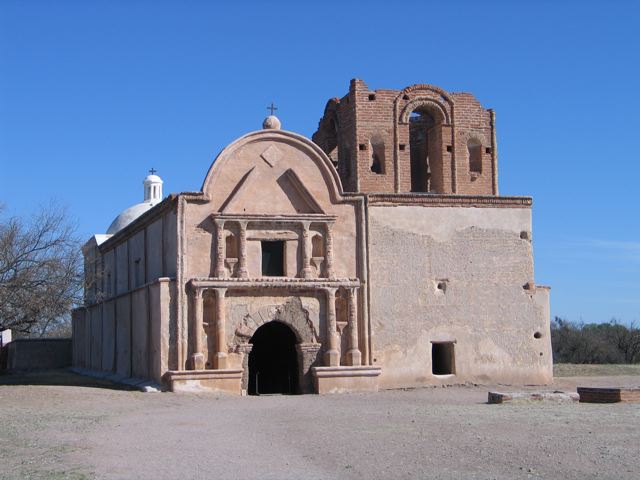


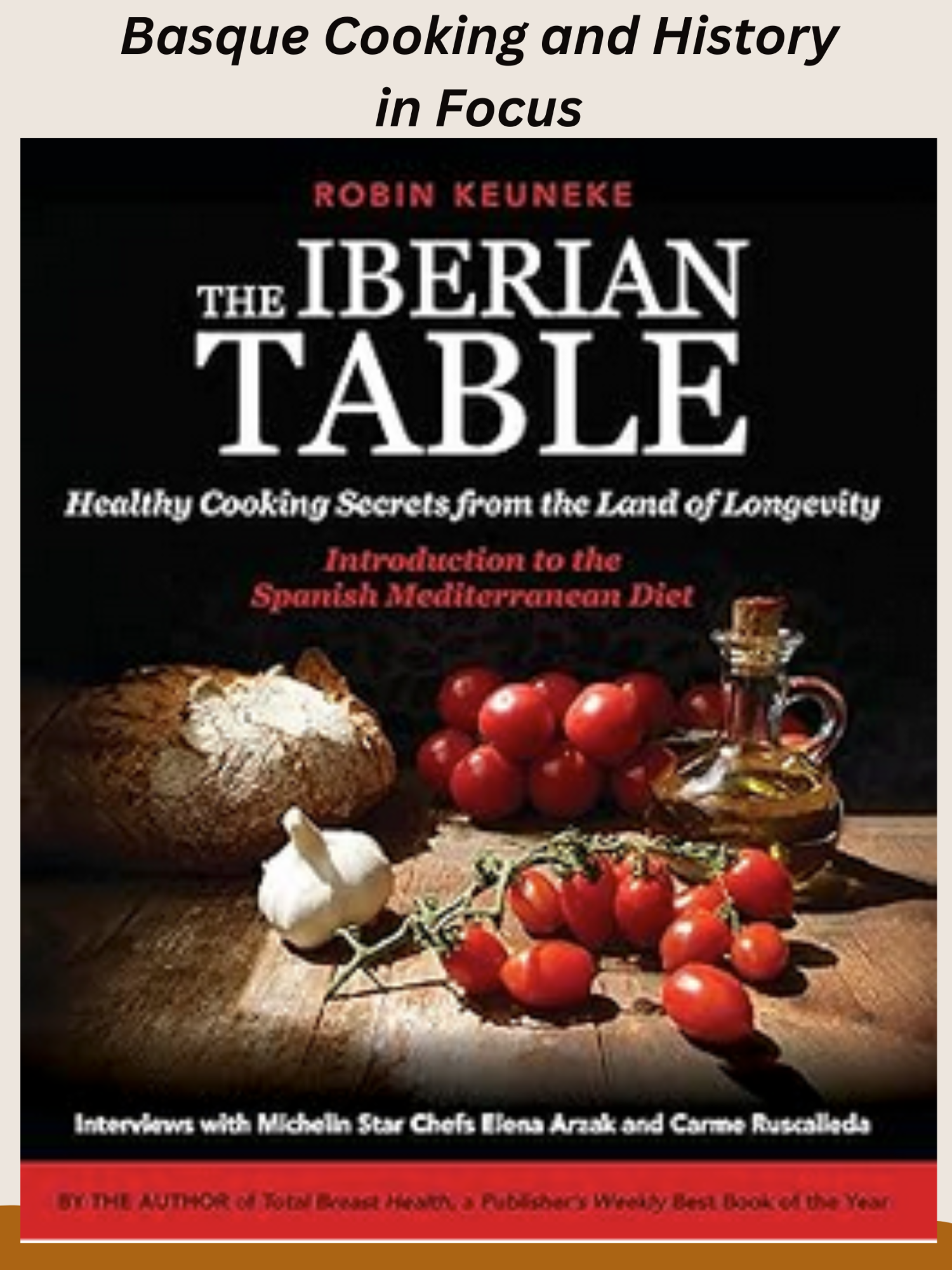
 Donate
Donate
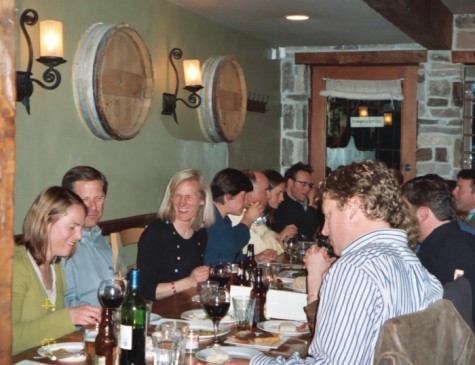
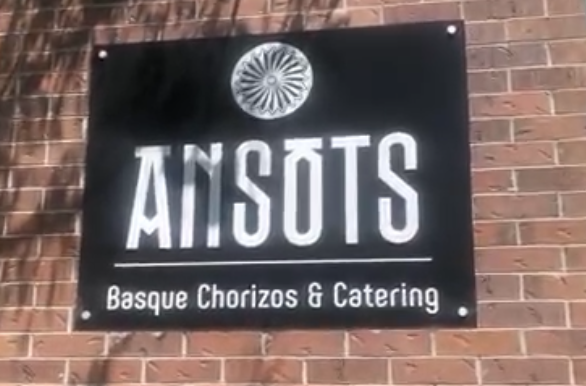

Brent Jauregui • Aug 29, 2021 at 7:49 pm
I’m Mexican American, but my name is Basque and my family looks Italian or typical Mediterranean (olive or white skin, brown eyes, brown hair, etc.). Do Basque people carry these genetics typically or are they more Germanic?
Teresa De Anda • Jun 29, 2020 at 7:43 am
I would like to know if you have any information on Pedro De Anda Altamirano. He was a conquistador in the 1500s. I am doing a family tree and would like to know more about him.
Diana Guerrero • Aug 23, 2018 at 11:05 am
Reading about José Joaquín Arrillaga, there is his diary translated to English and published by Dawson’s Bookshop, which is incredibly interesting. It describes Arrillaga’s four reconnaissance travels for the Spanish crown in the very harsh terrain comprehended in actual northern Baja California, to locate future religious missions. He made his trips the second half of 1796. Nothing about this lapse of his life appears in Wikipedia, nor in your page, and I think it represents best his character and personality, having been capable of succeeding in such an extremely difficult task, exploring unknown territories on horseback, without water, with high temperatures…I think you should add this information. I have not checked if the diary is available in PDF form. It is titled “Diary of his surveys of the frontier, 1796,” printed in 1969.
Nancy Zubiri • Aug 26, 2018 at 8:44 am
Thank you Diana for your interesting information.
The Editors
Robert Samudio • Aug 7, 2018 at 10:13 am
I am deep into research on my family roots for Zamudio who migrated from Zamudio, Spain with both conquistadors Cortez and Navarez during the invasion of Mexico, City and settled in Morelai, Michoacán.
Our great/great grandfather (Octaviano Zamudio) was the Police Commandant in Morelia, Michoacán in early 1900s. I have successfully linked our family tree into mid-1700’s but could use any/all assistance on gathering more information for our family roots even further.
I have pretty much exhausted all avenues/leads in using Ancestry.com and Family Search.
Best regards and look forward to your help and suggestions.
Habel ben Medardo de la triba Arambula • Sep 10, 2015 at 2:44 pm
The plaqa Arambula, I have traced back to the Highlands of Asirian mountains, where it happens to be where the 10 northern tribes of IsRaEl were diasporaed circa 721 bc. The aforesaid Highlands were called Aram:) Shalom
Habel ben Medardo, currently diasporaed in the Highlands of No. New Mexico. Waiting to make
Aliyah, after the destruction. 1000
Melissa Arambula • Jul 31, 2015 at 3:06 pm
My names is Melissa Alberta Arambula. I’m looking for help to recover my families blood and sweat… If you can help, my email is [email protected]. My father is Bernardo Rojas Arambula de Durango, my mother is Carmen Alberta Leon Martinez from the French and San Gabriel tribe.
margaret Lemon • Jul 22, 2014 at 7:48 pm
My grandfather was Jose Patrico Arrambide, his father Isidro Arrambide. Both were born in Salinas Victoria Nuevo leon Mexico. Isidro Arrambide was an officer during the mexican revolution. I would like more information on the Arrambide name, history.
Nancy Zubiri • Jul 24, 2014 at 6:52 pm
Hi Meg:
The best advice I can offer you is to sign up for the Basque genealogy yahoo group. They can answer your questions directly. https://groups.yahoo.com/neo/groups/basque-genealogy/info
Margaret Lemon • Apr 30, 2015 at 2:23 pm
Thank you for your information.
Paul C Basques • Apr 23, 2014 at 8:34 pm
Trying to find my connection with the Comanche, my grandfather Juan Basques was supposedly half Comanche and was raised by the Kiowas , Texas , Oklahoma.
Carmen Duran-de-Bazua • Jun 12, 2013 at 8:53 pm
OOOps, northern had an “h” missing. Sorry, my mother language is Spanish.
CDB
Carmen Duran-de-Bazua • Jun 12, 2013 at 8:48 pm
First of all I want to congratulate you on this interesting and complete work of historical facts about the basques in nortern America. My husband’s family (Basua or Bazua) comes from San Jose de las Bocas, Sinaloa, Mexico, and they are there since the first half of the XIX century. We found that in the Basque country in Europe this last name is completely lost, perhaps because only women had it and with the use of patronimics it was lost. In Mexico it has been found in the XVII century in Chihuahua, Mexico. We have been trying to trace back if, perhaps, a pair of brothers came as soldiers or aids during one of those expeditions in the XVI or XVII centuries to the nordwestern side of what it is now Mexico and the Texas, Arizona, New Mexico and Upper California (US after the Mexico-US war), and remained in this little mining town of Sinaloa on the west side of the Sierra Madre Occidental (San Jose de las Bocas), and as a big difference with their Basque relatives in Europe, they had mostly sons and have spread this last name all over the nordwestern side of Mexico and US. We have found to many of their descendants in Durango and Chihuahua, and have extended to Arizona, New Mexico, Upper California, Baja California, Sonora, the rest of Sinaloa, Jalisco, Monterrey, and of course, Mexico City, where we live. We would like to know if there are lists of the “less important basques” that came in the ships from Europe to America and joint the expeditions to Sinaloa, Sonora, Durango, Chihuahua, and the Californias because perhaps we might be able to find those first Basuas or Bazuas.
Cordial greetings from Mexico City,
Mrs. Carmen Durán de Bazúa
T. Aguirre • May 17, 2013 at 7:18 pm
I am curious my great grandmother was Conessa Aguirre, born in Morenci, AZ 1886, right out of Tucson, AZ. They were basque; her mother was from New Mexico, Silver City area. I have been doing some research into my ancestry, I also know quite a few basque settled in Northern Mexico. Mostly sheep herders, interesting how it all falls into palce.
Nancy Zubiri • May 18, 2013 at 11:38 am
The early Basques were avid explorers and participated in the conquest of Latin America under the Spanish crown. The separate identity as “Basque” came later. Basques have been immigrating to the U.S. since the 1800s. See the book “Amerikanuak” by William Douglass.
One of the best places to conduct your search is through the Yahoo group for “Basque genealogy.” They can answer a lot of your questions.
Pablo Basques/muralista artist/ Vietnam Veteran • Nov 19, 2009 at 9:47 pm
I have an aunt who talked to me about a great uncle or great great uncle who was 6ft. 8 inches tall , I wonder if this is who she referred to in your article of the Basques. My father and mother were born in Oklahoma. My father stated constantly on certain occasions that we were Comanche. I found the Basques name on the first original Comanche ( Dawes ) tribal rolls, and conveyed this information to the tribal council in Stanton Oklahoma, now they want my parents and grandparents birth and death certificates for further research. My aunt talks about my Great Grandmother who was the illegitimate child of one the Grandees on a big Rancho or Hacienda in Mexico , the father having taken liberties with a maid , thus the offspring or child became a maid on this Rancho or Hacienda. Someone liked My Great Grandmother and asked to have her. She was bought for 12 horses and eventually had 19 children,so the story goes, according to my aunt, and what she was told from a geneologist in the family who she eventually lost track of. All this was on my father’s side of the family. MY Geandfather was raised by the Kiowas in Texas or Oklahoma. This History is getting rather interesting and fascinating. If you could use some of this information in your further studies, research, and if you can help me shed further light into this quest of mine to know more about my Family History please feel free to respond with and further information or knowledge of The Basques as it may pertain to these tidbits of family history. – Pablo C. Basques